Abstract
A particularly extensive epidemic of Coxsackie B3 virus infection occurred in Johannesburg in the spring and summer of 1984. A total of 142 positive cases were diagnosed by isolation of the virus from stools and other specimens (60) or by serology (82). Coxsackie B3 accounted for 87% of the isolations and was also the dominant serotype on serology. The outbreak involved predominantly children and young adults, with no apparent sex differences being noted. The majority of specimens came from the white population and no significant difference in age or sex distribution could be observed between the two race groups. The major clinical presentation in the white group was Bornholm disease followed by cardiac involvement and then meningoencephalitis. In the black group, however, myocarditis was the major clinical presentation, which is of particular interest taking into account the extremely high incidence of acute rheumatic carditis in this population and the prevalence of chronic cardiomyopathy.
Full text
PDF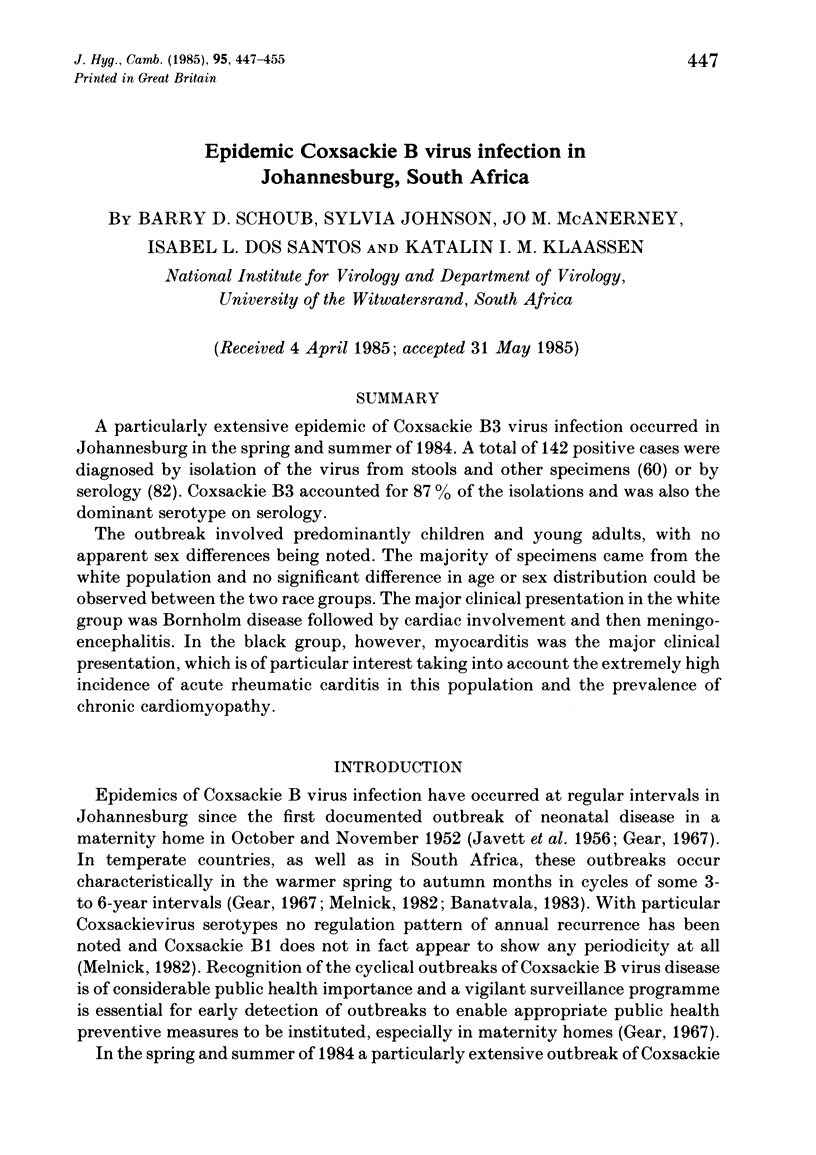
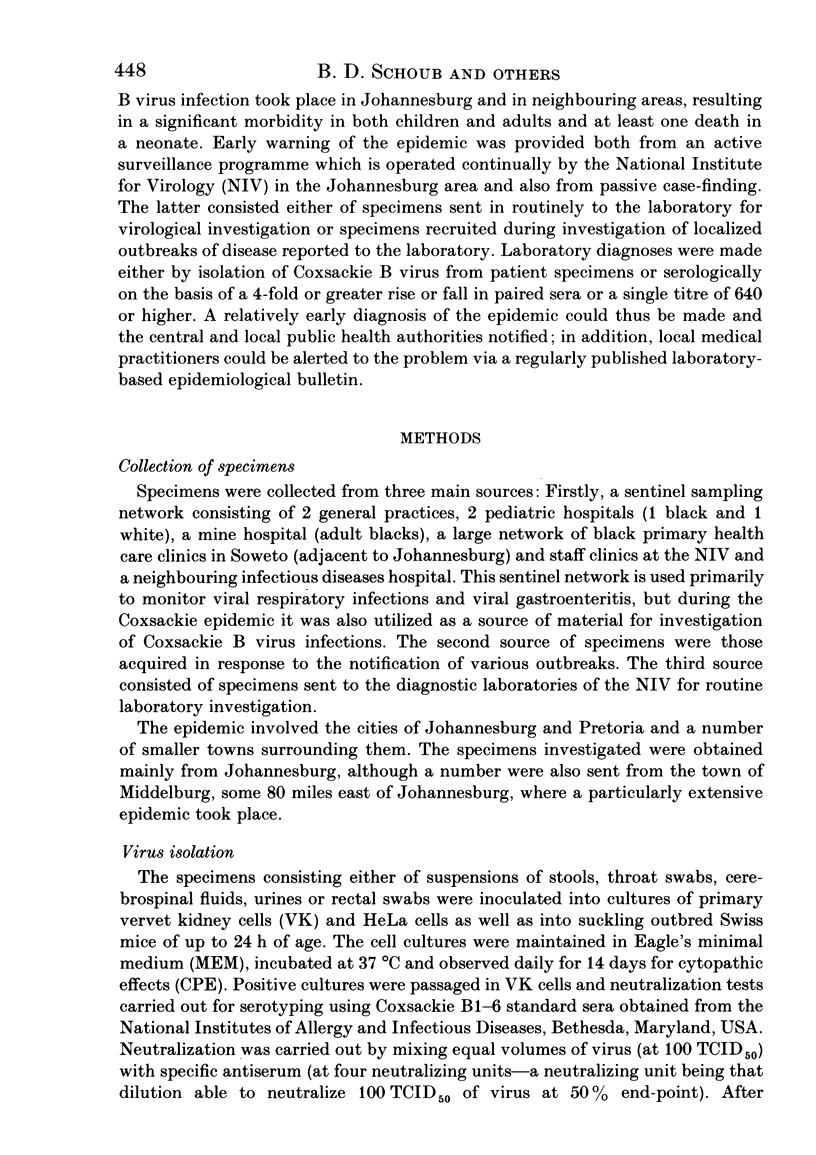
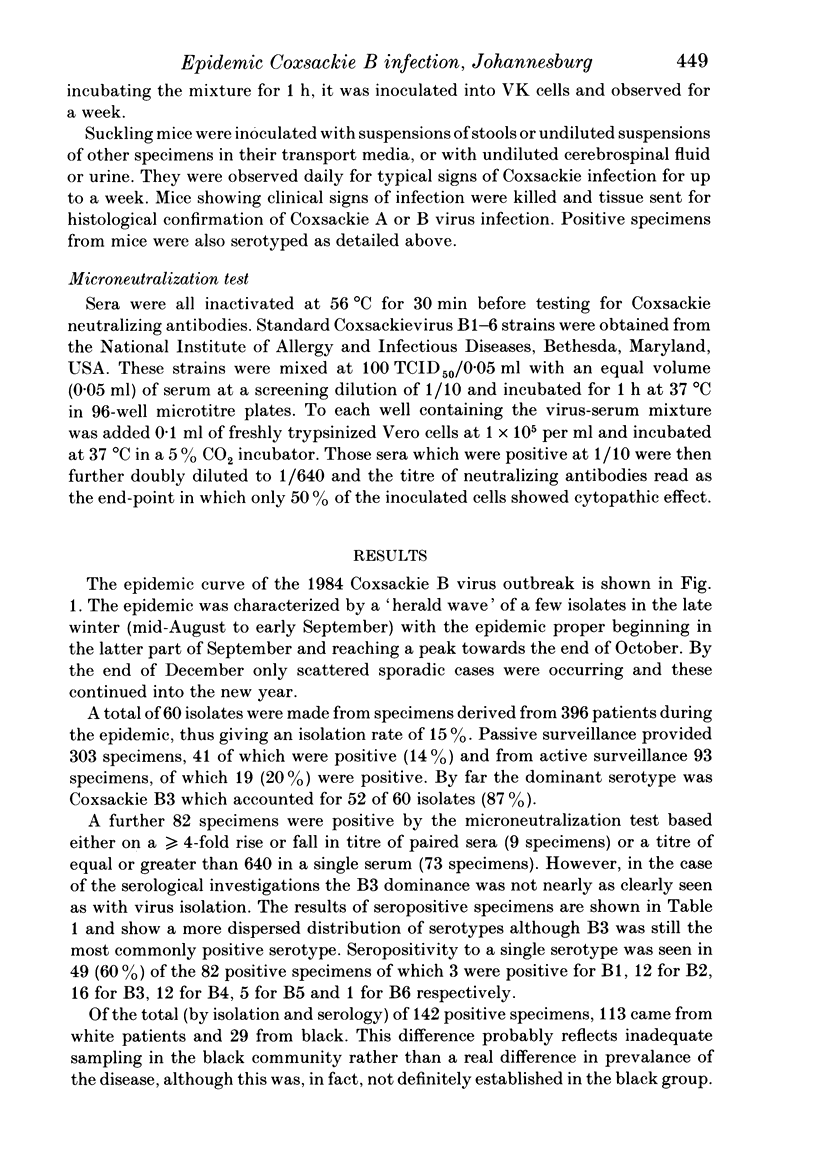
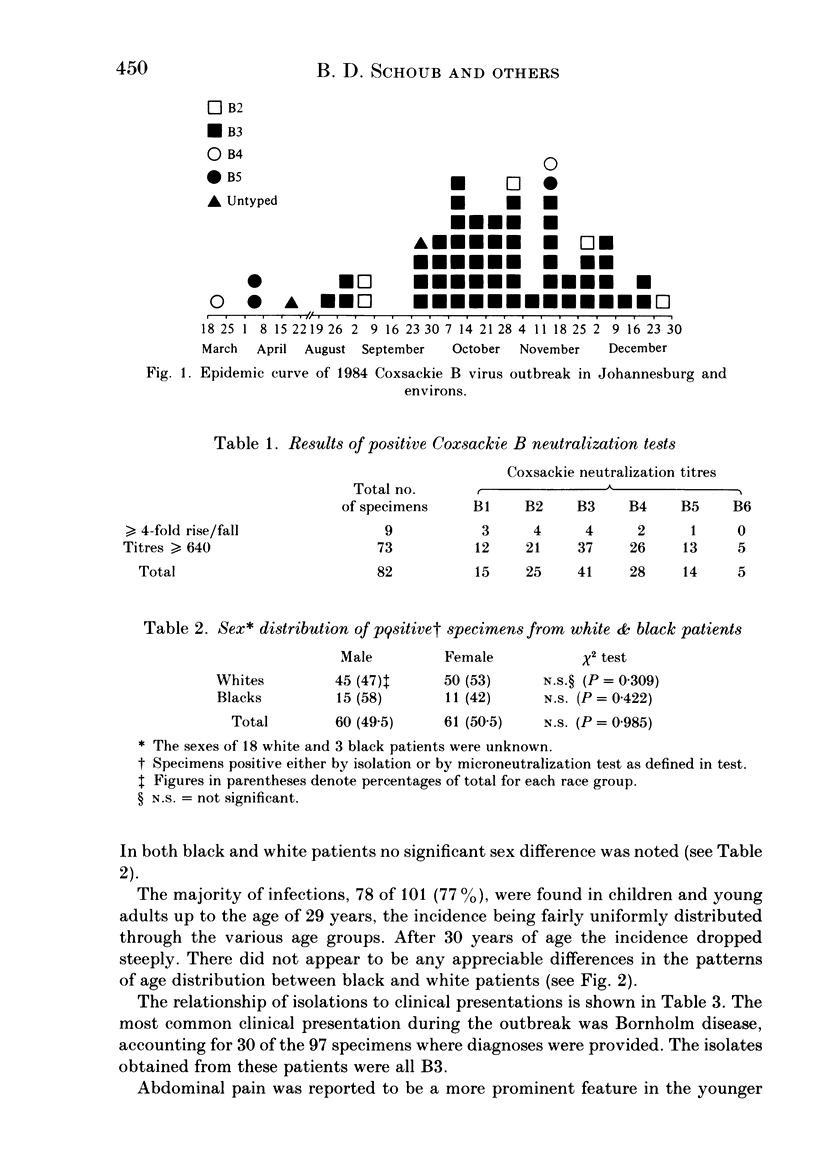
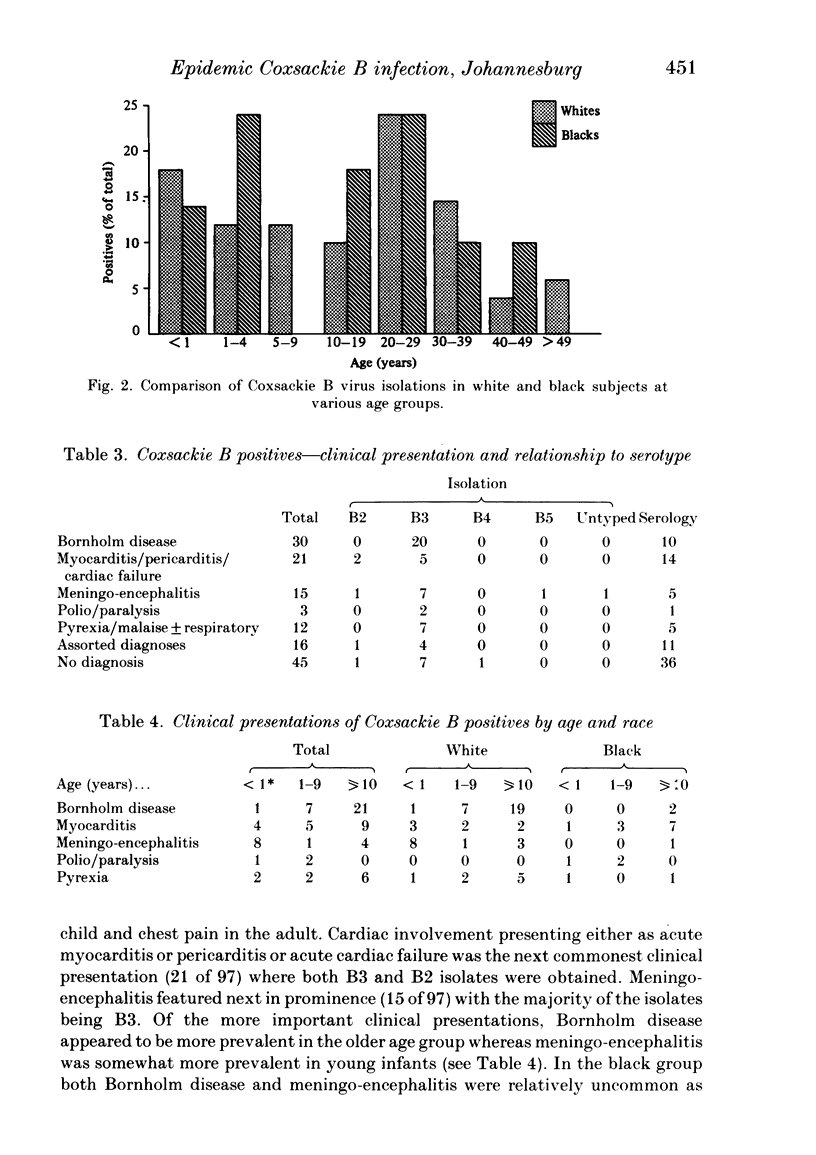
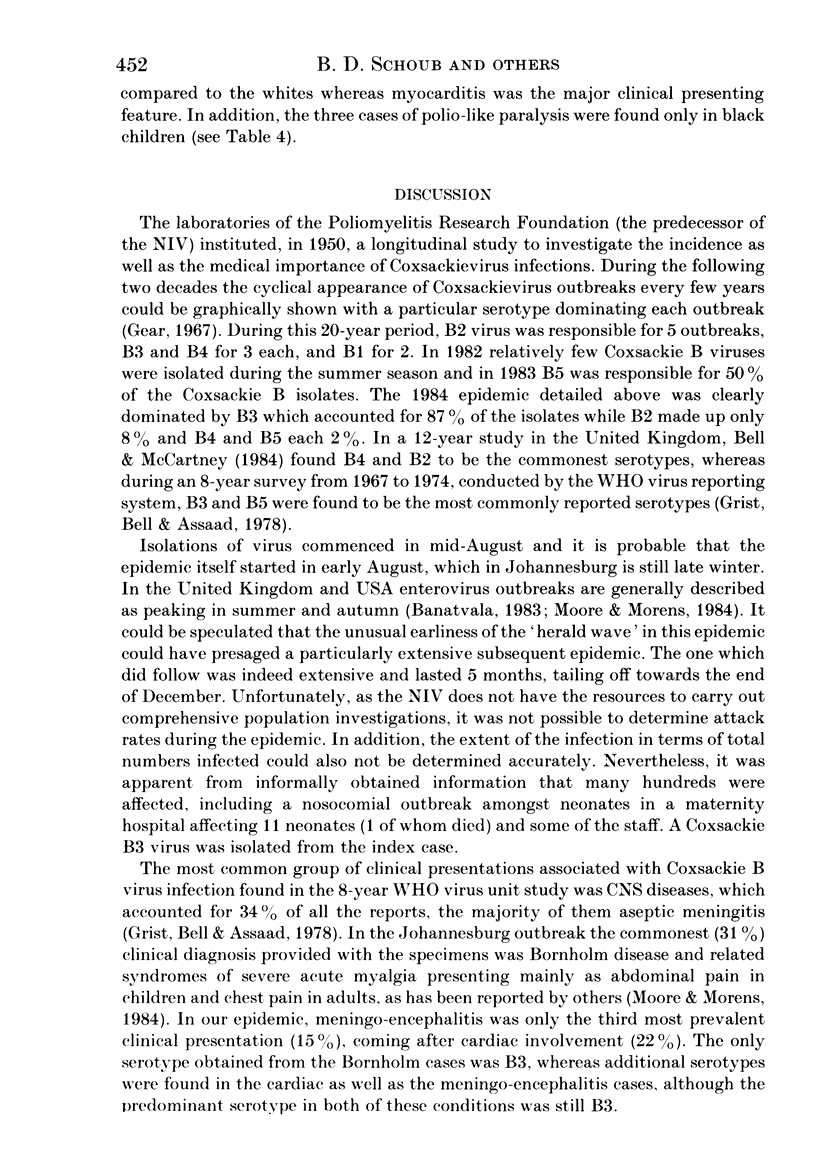
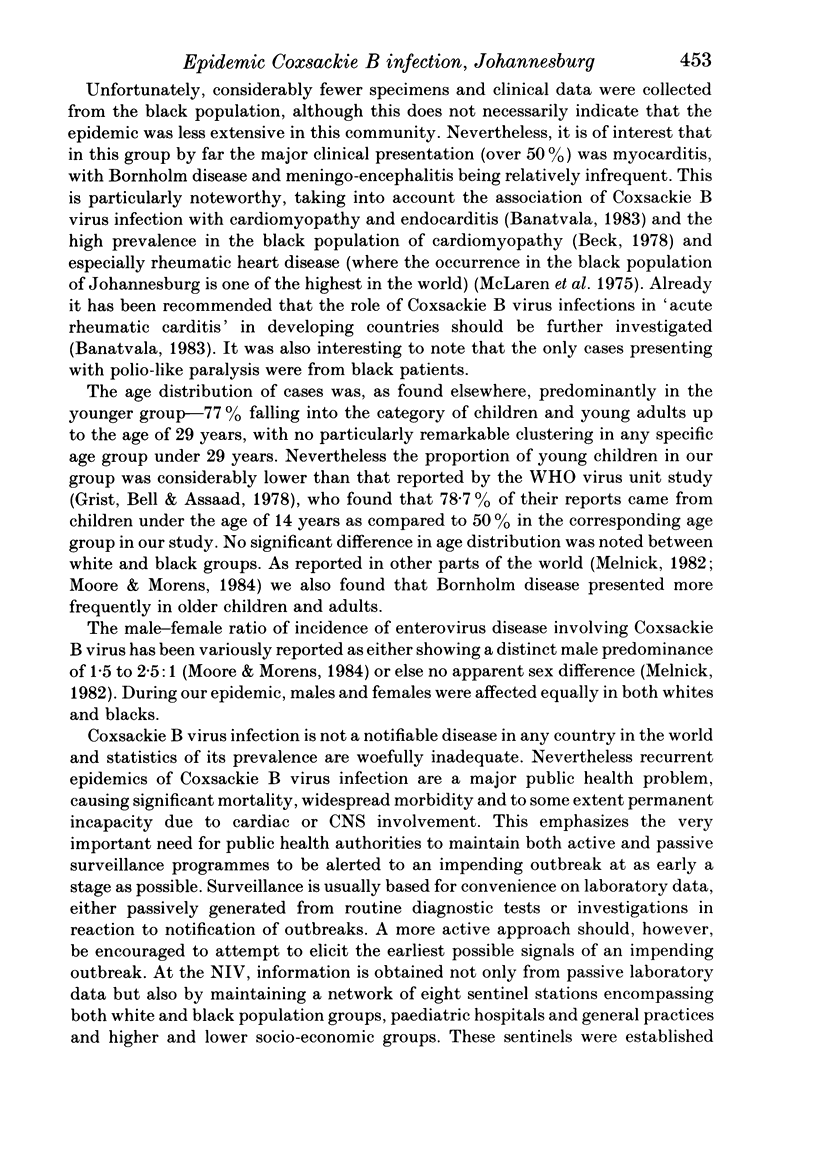
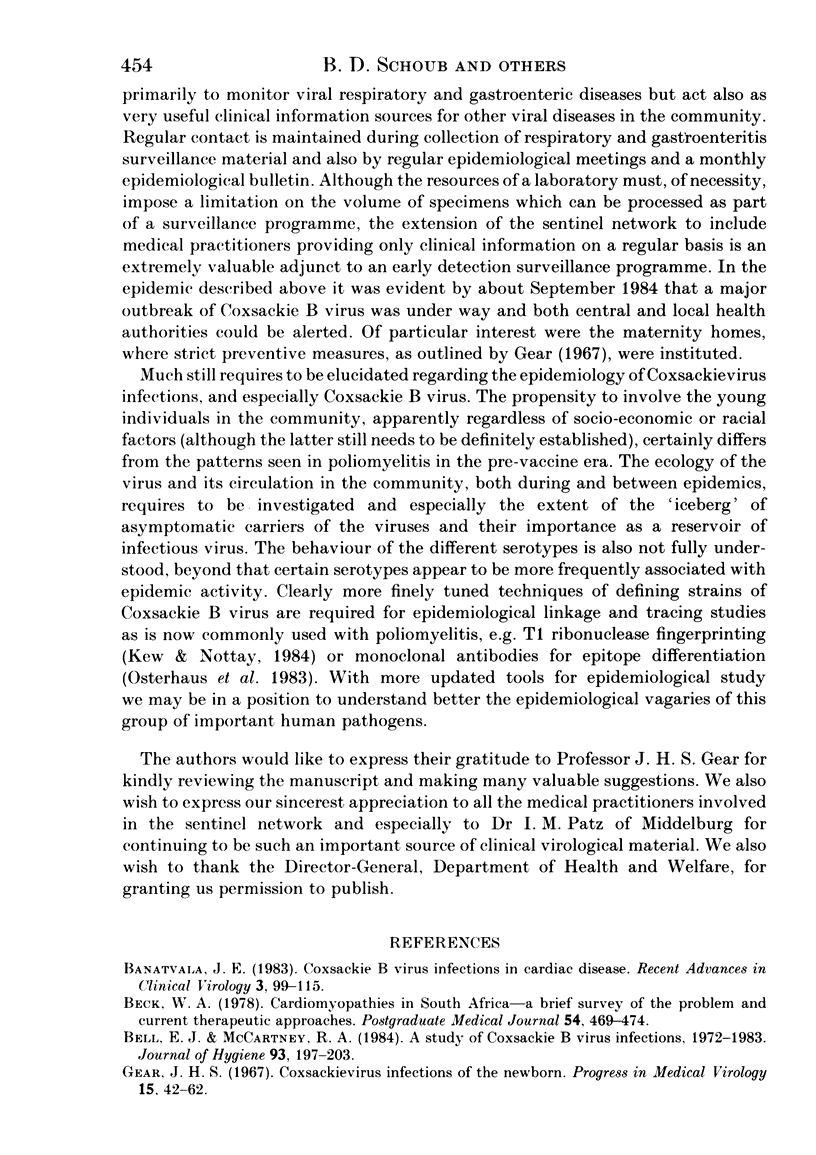
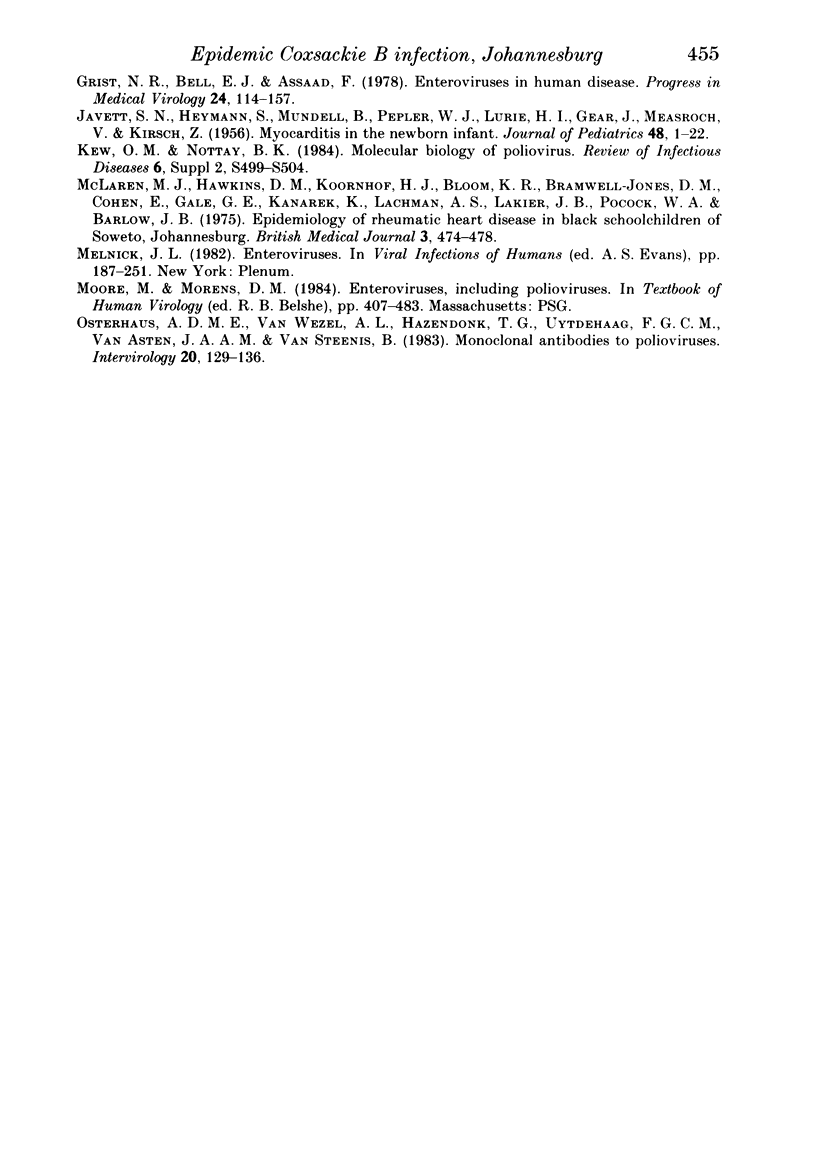
Selected References
These references are in PubMed. This may not be the complete list of references from this article.
- Beck W. Cardiomyopathies in South Africa--a brief survey of the problem and current therapeutic approaches. Postgrad Med J. 1978 Jul;54(633):469–476. doi: 10.1136/pgmj.54.633.469. [DOI] [PMC free article] [PubMed] [Google Scholar]
- Bell E. J., McCartney R. A. A study of Coxsackie B virus infections, 1972-1983. J Hyg (Lond) 1984 Oct;93(2):197–203. doi: 10.1017/s0022172400064718. [DOI] [PMC free article] [PubMed] [Google Scholar]
- Gear J. H., Measroch V. Coxsackievirus infections of the newborn. Prog Med Virol. 1973;15:42–62. [PubMed] [Google Scholar]
- Grist N. R., Bell E. J., Assaad F. Enteroviruses in human disease. Prog Med Virol. 1978;24:114–157. [PubMed] [Google Scholar]
- JAVETT S. N., HEYMANN S., MUNDEL B., PEPLER W. J., LURIE H. I., GEAR J., MEASROCH V., KIRSCH Z. Myocarditis in the new newborn infant; a study of an outbreak associated with Coxsackie group B virus infection in a maternity home in Johannesburg. J Pediatr. 1956 Jan;48(1):1–22. doi: 10.1016/s0022-3476(56)80111-x. [DOI] [PubMed] [Google Scholar]
- Kew O. M., Nottay B. K. Molecular epidemiology of polioviruses. Rev Infect Dis. 1984 May-Jun;6 (Suppl 2):S499–S504. doi: 10.1093/clinids/6.supplement_2.s499. [DOI] [PubMed] [Google Scholar]
- McLaren M. J., Hawkins D. M., Koornhof H. J., Bloom K. R., Bramwell-Jones D. M., Cohen E., Gale G. E., Kanarek K., Lachman A. S., Lakier J. B. Epidemiology of rheumatic heart disease in black shcoolchildren of Soweto, Johannesburg. Br Med J. 1975 Aug 23;3(5981):474–478. doi: 10.1136/bmj.3.5981.474. [DOI] [PMC free article] [PubMed] [Google Scholar]
- Osterhaus A. D., van Wezel A. L., Hazendonk T. G., UytdeHaag F. G., van Asten J. A., van Steenis B. Monoclonal antibodies to polioviruses. Comparison of intratypic strain differentiation of poliovirus type 1 using monoclonal antibodies versus cross-absorbed antisera. Intervirology. 1983;20(2-3):129–136. doi: 10.1159/000149381. [DOI] [PubMed] [Google Scholar]


